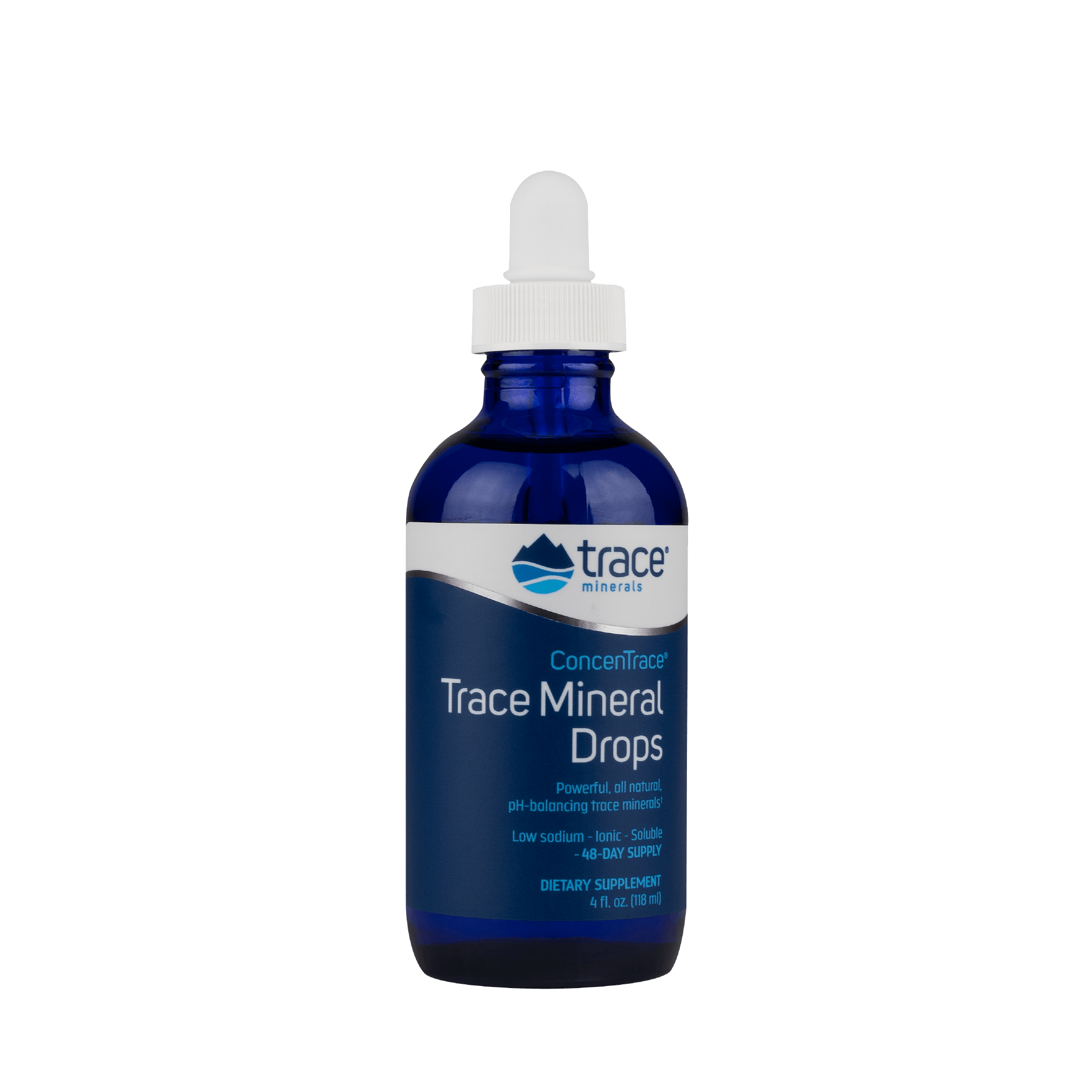Sara Parent, N.D.
Research Associate
Kathleen Jade, N.D.
Research Associate
Alexander G. Schauss, PhD, FACN
Senior Director of Research
Electrolytes are the charged substances that result when a salt is dissolved in solution. These positive and negatively charged ions can conduct electricity, and are thus referred to as “electrolytes.” For instance, common table salt is sodium chloride (NaCl). When dissolved in water (or blood), it separates into a positively charged sodium ion (Na+) and a negatively charged chloride ion (Cl-). Important electrolytes for physiological functions in humans include sodium (Na+), potassium (K+), magnesium (Mg2+), and chloride (Cl-).
As a group, these electrolytes are involved in countless activities essential for life, including energy production, nerve transmission, muscle contractions, pH balance, fluid balance, and more. The human body, the amazing self-regulating organism that it is, has a number of mechanisms in place to maintain proper electrolyte balance.
However, human beings, the amazing boundary-pushers that we are, have put ourselves in a variety of situations that may threaten this balance—extreme environments, heavy physical activity, and inadequate diets can all contribute to situations in which humans have to give their normally self-regulating bodies a helping hand. In other words, under average conditions, healthy individuals will meet their electrolyte requirements over the course of a normal day by eating and drinking.
But when conditions promote excessive sweating and increased metabolic activity, especially those who have marginal electrolyte intake may place themselves at risk for deficiency. Environmental factors, such as a sharp decrease in the amount of minerals people now consume in their drinking water or eat in their foods, especially when too much sodium is consumed, can move more people into an electrolyte imbalance.
Sodium and chloride
Usually a package deal, sodium and chloride are the major extracellular electrolytes in the human body, sodium providing the positive charge and chloride the negative charge. In addition to providing balance to one another, these ions are essential for maintaining blood volume and pH (Schauss, 1998).
Sodium and chloride also happen to be the main electrolytes lost in sweat, especially during prolonged exertion in warm and hot environments. Though the average American consumes substantially more than enough sodium chloride, there are some individuals and situations in which these electrolytes should be supplemented.
Those who experience higher than average sweating, either through recreational activities such as long-distance running, professional athletics, or mining, construction work, and the armed forces, need to replace both their fluids and their electrolytes (especially sodium and chloride) to maintain a healthy balance.
Drinking water alone can sometimes be counter-productive, as it will decrease the osmolality (concentration of ions) of the extracellular fluid, signaling the kidney to let go of even more fluid to find a balance. This “diluted blood” also tends to shut off the thirst mechanism.
Because strenuous exercise actually requires fluid replacement to be slightly above fluid loss, thirst is a key way to assure that individuals will replace an adequate amount of fluid.
Eating solid food is an effective way of replacing sodium and chloride, however there are many instances when this would be impossible or impractical.
Therefore, adding sodium and chloride to the water of individuals who regularly sweat will not only replace the loss of these essential electrolytes, but will also help maintain proper blood osmolality, assuring thirst and kidney mechanisms to maintain adequate blood volume and hydration (Maughan and Shirreffs, 1997).
Potassium
While sodium is our principle extracellular cation (positively charged ion), potassium is our principal intracellular cation.
The normal functioning of the human body depends on an intricate balance of potassium and sodium concentrations. Potassium plays a critical role in nerve impulse transmission, maintaining cellular fluid volume and pH, muscle contraction, heart function and tissue growth and repair. Additionally, potassium helps our body hold onto calcium, while excessive sodium leads to both potassium and calcium loss (Rhoades and Pflanzer, 1996; Schauss, 1998).
Potassium is not as readily lost in sweat, partially because the composition of sweat is more similar to extracellular fluids, and potassium is primarily found intracellularly.
However, prolonged sweating in hot environments does lead to potassium loss through sweat, which may have significant consequences. The Committee on Military Nutrition Research, Food and Nutrition Board published a book called Fluid Replacement and Heat Stress. The chapter entitled “Potassium Deficiency as the Result of Training in Hot Weather” came to the conclusion that potassium loss in extreme training conditions may adversely effect blood flow, muscle function and energy storage, impairing both endurance and performance (http://books.nap.edu/openbook.php?record_id=9071&page=117).
Magnesium
Magnesium is the fourth most abundant cation in the body. Almost 60% is found in bone and the rest stored intracellularly.
Magnesium has an effect on many cellular functions, including transport of calcium and potassium, DNA and protein synthesis, energy metabolism, and blood sugar maintenance. It is also important for normal neurological and muscular function, including key involvement in cardiac and smooth muscle contractions (Groff, Gropper et al., 1995).
Most Americans consume less than the estimated average requirement for magnesium. This comes as no mystery when examining the standard American diet – refining foods has removed magnesium from many foods that would have otherwise provided it while fortification practices have not included magnesium when adding back some of the lost nutrients.
For example, olive, corn and peanut oils are all devoid of magnesium, while their whole-food predecessors are rich sources of this mineral.
Similarly, white flour contains far less magnesium than whole-wheat flour (Seelig 2003).
Other significant food sources of magnesium include green leafy vegetables and legumes, which are low in the standard American diet. Additionally, people are consuming less “hard water” (water that contains magnesium and calcium), and more “soft water” or distilled bottled water, shorting them on another historical source of magnesium (Seelig 1980).
The Magnesium Website (www.mgwater.com) highlights this concept with a quote from Groundwater Resources of British Columbia, Canada:
“According to the U.S. National Academy of Sciences (1977) there have been more than 50 studies, in nine countries, that have indicated an inverse relationship between water hardness and mortality from cardiovascular disease. That is, people who drink water that is deficient in magnesium and calcium generally appear more susceptible to this disease. The U.S. National Academy of Sciences has estimated that a nation-wide initiative to add calcium and magnesium to soft water might reduce the annual cardiovascular death rate by 150,000 in the United States.” ( Dr. Harold D. Foster, ” Groundwater and Human Health,” Groundwater Resources of British Columbia, Ministry of Environment, Lands, and Parks and Environment Canada, pp 6.1-6.3 (reprint), 1994.
Though only negligible amounts of magnesium are lost in sweat under normal conditions, there is still some evidence that prolonged exertion in hot and humid environments can decrease serum magnesium, which could prove to be clinically significant in individuals with marginal magnesium status.
Additionally, although magnesium levels may return to normal after some training sessions, over a prolonged period of regular exertion, magnesium levels may remain suboptimal. One theory is that elevated metabolic activity, such as that found in prolonged exertion, increases the requirement for magnesium. A plausible mechanism could be increased lipolysis, or the breakdown of fat, which has been shown directly relate to a decrease in plasma magnesium (Rayssiguier, Guezennec et al., 1990).
Dr. Whang, in his paper entitled “Electrolyte and Water Metabolism in Sports Activities,” makes the argument for the addition of magnesium to sports beverages to support healthy circulation, blood sugar control and potassium levels (Whang, 1998).
Furthermore, some researchers have even implicated magnesium loss (and not the traditionally assumed sodium loss) in the pathogenesis of “miner’s cramps” (a condition, also known as “heat cramps,” in which minors, after prolonged exposure to a hot environment, would experience painful cramps when attempting to rehydrate with plain water) (Rayssiguier, Guezennec et al., 1990; Berning and Steen 1998).
Even at the 2008 Superbowl, played at a moderate temperature of the mid-70’s indoors, numerous well-conditioned athletes had to leave the field of play due to muscle cramping.
Conclusion
Proper hydration and electrolyte status are vitally important aspects of human health. Certainly large deviations in either are incompatible with life.
Although there is a lack of scientific consensus on the precise implications of more subtle changes, there is evidence that maintaining adequate fluid and electrolyte intake will positively impact health and physical performance.
Modern living, and its associated dependency on processed foods, increased consumption of purified and/or distilled water, and depleted soil used to grow fruit, vegetables, and grains, has culminated in a distinct drop in meeting our electrolyte needs (with the exception of sodium, of course).
Many active hobbies and jobs that result in significant sweating increase our need for these electrolytes. Perhaps it is time to take an active role in restoring this electrolyte balance, by supplementing with foods, dietary supplements, and beverages that best meet our electrolyte requirements.
References
Berning, J. R. and S. N. Steen (1998). Nutrition for Sports and Exercise. Gaithersburg, MD, Aspen Publishers.
Groff, J. L., S. S. Gropper, et al. (1995). Advanced Nutrition and Human Metabolism. St Paul, West Publishing Company.
Maughan, R. J. and S. M. Shirreffs (1997). “Recovery from prolonged exercise: restoration of water and electrolyte balance.” J Sports Sci 15(3): 297-303.
Rayssiguier, Y., C. Y. Guezennec, et al. (1990). “New experimental and clinical data on the relationship between magnesium and sport.” Magnesium Res 3(2): 93-102.
Rhoades, R. and R. Pflanzer (1996). Human Physiology. Ft Worth, Saunders College Publishing.
Schauss, A. (1998). Minerals, Trace Elements, and Human Health. Tacoma, AIBR Press.
Seelig, M. S. (1980). Magnesium Deficiency in the Pathogenesis of Disease: Early Roots of Cardiovascular, Skeletal, and Renal Abnormalities. New York, Plenum Medical Book Company.
Seelig, M. S. (2003). The magnesium factor. New York, Penguin.
Whang, R. (1998). “Electrolyte & water metabolism in sports activities.” Compr Ther24(1): 5-8.





Leave a comment
This site is protected by reCAPTCHA and the Google Privacy Policy and Terms of Service apply.